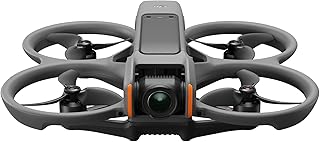DJI Drone for Filmmaking: The New Era of Aerial Cinematography
The arrival of DJI drones has revolutionized filmmaking, particularly in the realm of aerial cinematography. Gone are the days of expensive helicopter rentals and complex logistics; now, filmmakers of all levels can access stunning aerial footage with relative ease and affordability. This essay will explore the impact of DJI drones on filmmaking, highlighting the key advantages they offer and the new possibilities they unlock for visual storytelling.
Advantages of DJI Drones in Filmmaking:
* Accessibility and Affordability: Compared to traditional methods, DJI drones provide a cost-effective solution for aerial filmmaking. They are relatively affordable, require minimal crew and equipment, and can be easily transported, making them accessible to independent filmmakers and smaller productions.
* Versatility and Control: DJI drones offer a range of features, including high-resolution cameras, stabilized gimbals, and intelligent flight modes, allowing for precise control and creative freedom in capturing shots. They can achieve dynamic movements and unique angles previously unimaginable without expensive rigs and helicopters.
* Safety and Ease of Use: Compared to manned aircraft, drones are inherently safer, especially in challenging environments. Their intuitive controls and user-friendly interfaces make them relatively easy to operate, even for novice pilots, allowing filmmakers to focus on the creative aspects of filmmaking.
* Unique Perspectives and Storytelling Opportunities: The ability to capture shots from above provides fresh perspectives, adding depth and visual interest to narratives. Drones allow filmmakers to reveal the scale of a scene, emphasize relationships between characters and their environments, and create breathtaking cinematic experiences.
The New Era of Aerial Cinematography:
DJI drones have pushed the boundaries of cinematic storytelling, enabling filmmakers to achieve previously unattainable shots and create immersive experiences. Here are some key ways they have reshaped the landscape of aerial filmmaking:
* Increased Realism and Immersion: By capturing shots from a bird's-eye view, drones create a sense of immediacy and realism, transporting viewers into the world of the film and immersing them in the story.
* Enhanced Visual Storytelling: The unique perspectives provided by drones allow filmmakers to convey complex emotions and narratives through visual cues, offering a fresh and dynamic approach to visual storytelling.
* Greater Accessibility for Independent Filmmakers: Drones have democratized aerial filmmaking, allowing independent filmmakers and smaller productions to compete with larger budgets and resources. This fosters creativity and innovation, leading to diverse and compelling narratives.
Challenges and Considerations:
While DJI drones offer numerous advantages, it's essential to be aware of potential challenges and considerations:
* Regulations and Legality: Operating drones for filmmaking purposes requires adherence to specific regulations and permits depending on the location and purpose.
* Technical Expertise: While user-friendly, drones still require a degree of technical proficiency and understanding of flight principles for safe and effective operation.
* Battery Life and Limitations: The battery life of drones is limited, requiring careful planning and management to ensure enough flight time for desired shots.
Conclusion:
DJI drones have ushered in a new era of aerial cinematography, transforming the way films are made and consumed. Their accessibility, versatility, and unique perspectives have empowered filmmakers to create breathtaking visuals and immersive experiences that captivate audiences. While challenges exist, the benefits of using drones for filmmaking outweigh the drawbacks, opening a world of possibilities for cinematic storytelling and shaping the future of the industry.


